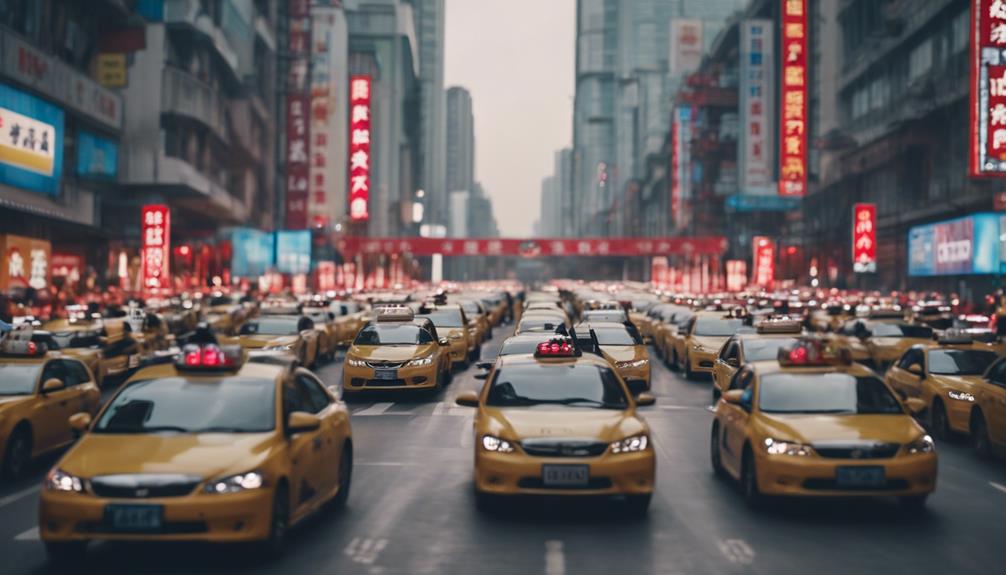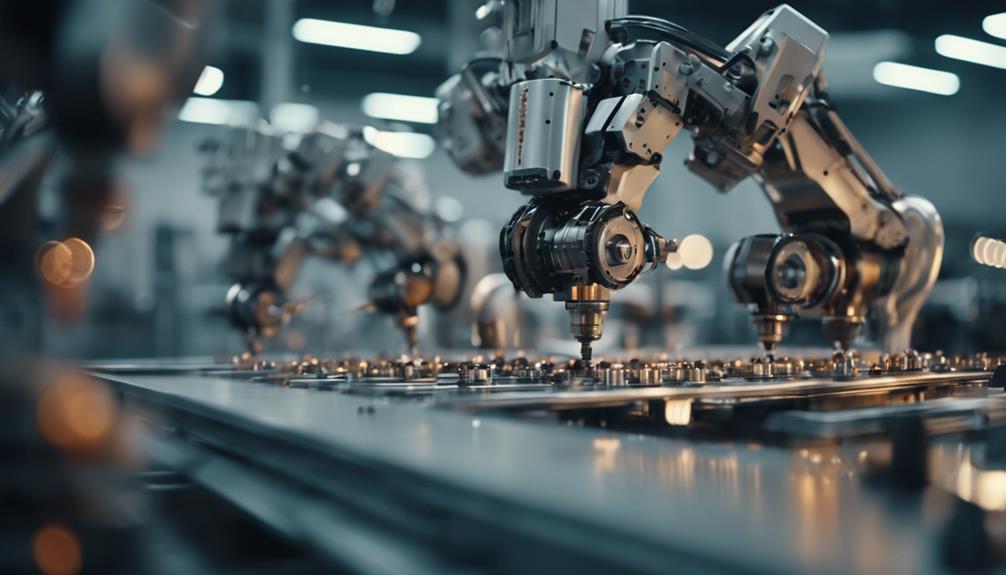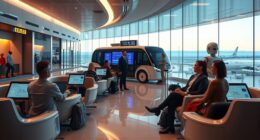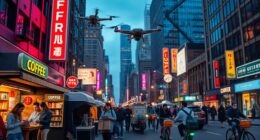Beijing's recent decision to relax restrictions on driverless robotaxis for Baidu and Pony AI signals a key advancement toward phasing out human taxi drivers. This move represents a notable progression in autonomous transport technology, aligning with global trends in the sector. While the regulation mandates human staff presence inside autonomous vehicles for safety reasons, the shift indicates a growing acceptance of autonomous vehicles in Beijing. This milestone highlights the city's commitment to embracing innovative transportation solutions. Further details on the implications of this regulatory change and its impact on the transportation industry can be discovered by exploring the developments in this significant shift.
Key Takeaways
- Beijing allows Baidu and Pony.ai to operate driverless taxis without safety drivers.
- Human staff must be inside cars but not in the driver's seat.
- Robotaxis can't charge fares without human staff onboard.
- Potential displacement of traditional taxi drivers raises job concerns.
- Beijing's regulatory shift signals a significant step towards reducing human taxi drivers.
Regulation Changes for Robotic Taxis
Beijing recently revised regulations regarding robotic taxis, permitting Baidu and Pony.ai to operate driverless vehicles without safety drivers. While staff members are still required to be present inside the cars, they're no longer needed in the driver's seat.
However, the Chinese government hasn't yet allowed these robotaxis to charge fares without human staff on board. This move aligns Beijing with companies like Alphabet's Waymo and GM's Cruise in the U.S., where public robotaxis can operate without human staff.
It's essential to note that Beijing's robotaxi regulations differ from city to city, with varying rules for testing and charging riders. This regulatory change marks a significant step towards autonomous driving technology advancement in China's capital, paving the way for a potential future where driverless vehicles become a common sight on the streets of Beijing.
Impact on Human Taxi Drivers
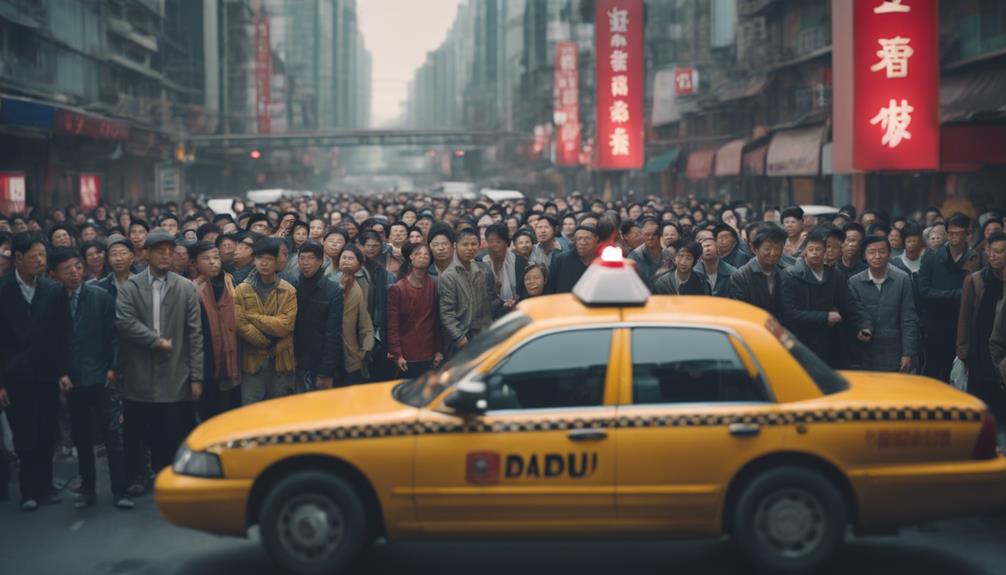
The introduction of driverless robotaxis in Beijing may lead to concerns about job displacement among traditional taxi drivers. As autonomous taxi services expand, there could be a need for these drivers to retrain for new roles in the transportation sector.
The impact on human taxi drivers underscores the need to address potential economic challenges and support those affected by the shift towards autonomous vehicles.
Job Displacement Concerns
As the shift to robotic taxis gains momentum in China's capital, concerns over job displacement loom large for traditional human taxi drivers. The movement towards autonomous vehicles in Beijing, marked by the removal of safety drivers in robotic taxis, signifies a pivotal moment that could potentially lead to the elimination of human taxi drivers. The safety and efficiency of robotic taxis are being highlighted, raising questions about the future of traditional human-driven taxis and the livelihoods of those currently employed in the industry.
With regulatory changes in Beijing easing restrictions on robotic taxis, the employment prospects for human taxi drivers face uncertainty. The shift towards driverless operations poses significant challenges, with job displacement becoming a pressing concern as the technology advances. The impact of these changes on the workforce in the transportation sector is a topic of growing importance, as the movement towards automation progresses. The potential displacement of human taxi drivers underscores the need for proactive measures to address this issue and support those affected by the evolving landscape of transportation services.
Training for New Roles
Amidst the growing prevalence of autonomous vehicles in the transportation sector, human taxi drivers are increasingly facing the need for training to shift into new roles. With Beijing's decision to allow companies like Baidu and Pony.ai to operate driverless robotaxis, the potential impact on traditional taxi drivers is becoming more apparent. The automation in the transportation sector could lead to job displacement for human taxi drivers, prompting the necessity for training programs to aid in adapting them to new roles or industries.
| Training Programs | Benefits |
|---|---|
| Skill Development | Enhances employability |
| Industry Knowledge | Facilitates adjustment |
| Soft Skills Training | Improves adaptability |
| Networking Opportunities | Expands job prospects |
| Career Counseling | Guidance for future paths |
As the shift towards robotaxis accelerates, questions arise about the future of employment for human drivers in the industry. By focusing on training initiatives, stakeholders can mitigate the potential job displacement and equip human taxi drivers with the skills needed for success in evolving roles within the transportation sector.
Autonomous Vehicle Advancements
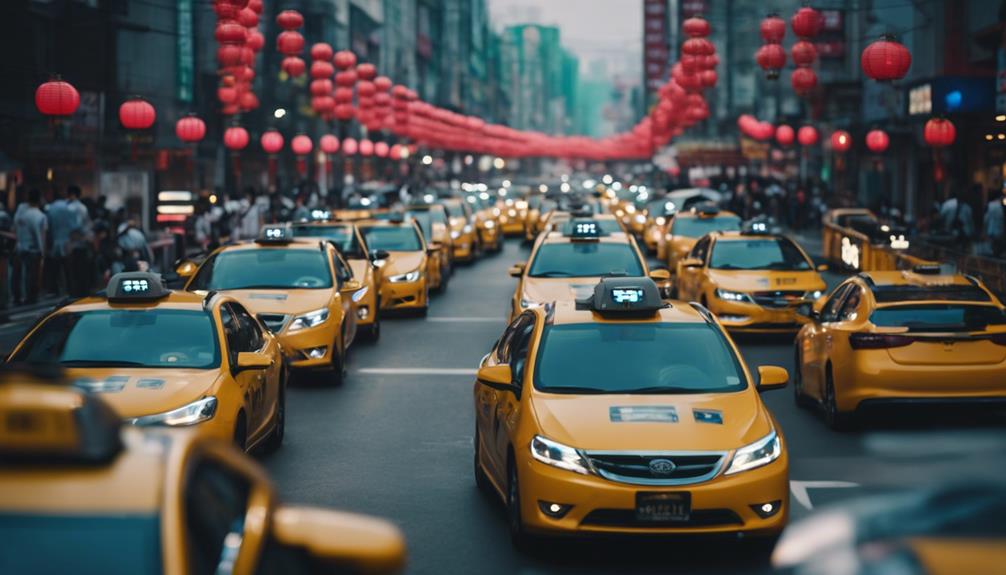
How are autonomous vehicle advancements reshaping the future of transportation?
The recent milestone achieved by Baidu and Pony.ai in obtaining permits to operate driverless robotaxis in Beijing signifies a significant leap forward in China's autonomous driving industry.
With Beijing's decision to allow robotaxis to operate without safety drivers, the gradual elimination of human taxi drivers seems inevitable.
Baidu and Pony.ai, leading the way in autonomous vehicle technology, are working towards fully autonomous taxi services.
The removal of safety drivers not only indicates progress in technology but also boosts investor confidence in the feasibility of autonomous driving.
This regulatory change in Beijing not only sets a precedent for other tech companies in the self-driving sector but also underscores China's commitment to advancing autonomous technologies.
As driverless robotaxis become more prevalent on the streets, the landscape of transportation is evolving towards a future where autonomous vehicles play a central role in reshaping how people move from one place to another.
Baidu's Robotaxi Services Expansion
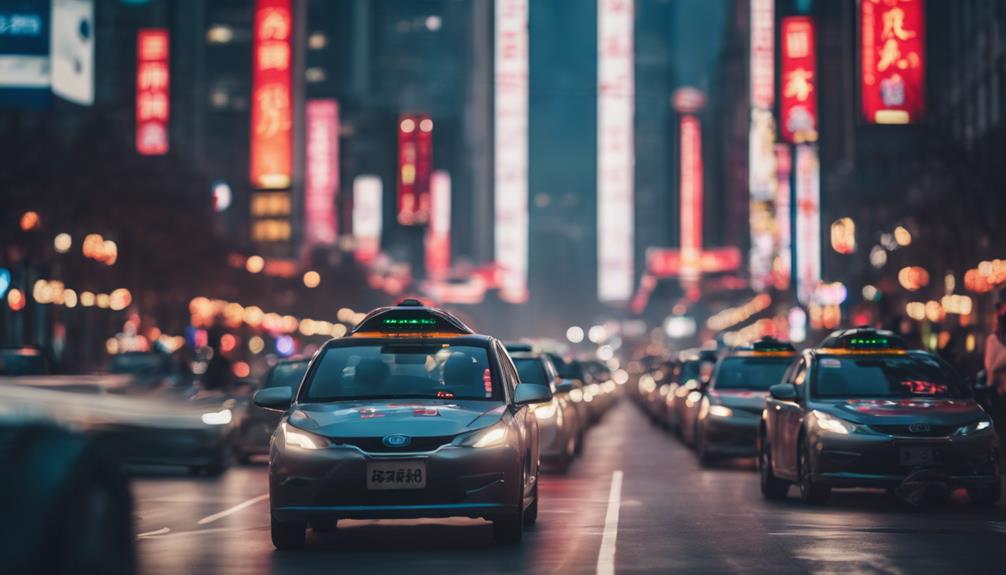
Baidu's expansion of robotaxi services in Beijing's Yizhuang district marks a significant milestone in the autonomous driving industry. This move signifies a step towards widespread adoption of driverless vehicles. Key points to note about Baidu's robotaxi services expansion include:
- Baidu and Pony.ai have received permission to operate driverless robotaxis in Beijing's Yizhuang district.
- Baidu currently operates 10 robotaxis without safety drivers and plans to add 30 more vehicles to its fleet.
- The Apollo Go robotaxi by Baidu has commenced fare charging services in Chongqing and Yangquan.
- Pony.ai, on the other hand, has been granted a license to charge fares similar to traditional taxis in Nansha district, Guangzhou.
- Both companies are actively working towards increasing their fleet size and service areas, indicating a growing presence of autonomous vehicles on the roads.
These developments not only showcase technological advancements but also pave the way for a future where self-driving taxis could become a common sight in urban areas.
Pony AI's Role in Driverless Taxis

Pony.ai, a key player in the driverless taxi market, adopts cutting-edge technology to guarantee passenger safety and operational efficiency. By utilizing a fleet of non-electric vehicles, Pony.ai demonstrates its commitment to innovation in autonomous driving.
The company's shift towards more robotaxis without safety drivers highlights its dedication to advancing the autonomous vehicle industry.
Pony AI Technology Overview
Operating driverless robotaxis in Guangzhou, Pony.ai utilizes a variety of non-electric vehicles to advance autonomous vehicle technology. The company, backed by Toyota, is at the forefront of developing cutting-edge autonomous driving systems.
Here are some key points regarding Pony AI's technology:
- Pony.ai operates driverless robotaxis in Guangzhou, showcasing its commitment to innovation in the autonomous vehicle industry.
- The company's focus on utilizing non-electric vehicles sets it apart from other autonomous driving companies, emphasizing sustainability and efficiency.
- Pony.ai's recent achievement of obtaining a license to charge fares like traditional taxis in Nansha district, Guangzhou, marks a significant milestone in the integration of autonomous vehicles into daily transportation services.
- While Pony AI's robotaxis in Nansha currently require safety drivers, the company has ambitious plans to increase the number of vehicles operating without safety drivers in the future.
- Pony.ai's dedication to pushing the boundaries of autonomous vehicle technology highlights its position as a key player in shaping the future of transportation.
Safety Features Implementation
Pony.ai's emphasis on safety features implementation in their driverless taxis showcases their commitment to ensuring passenger security in autonomous vehicles. The company actively engages in implementing robust safety protocols for their autonomous vehicles, equipping their driverless taxis with advanced sensing and computing technologies.
By focusing on the development of reliable systems, Pony.ai aims to enhance passenger safety in the domain of autonomous driving. This dedication to safety underscores Pony.ai's commitment to innovation in autonomous driving technology.
Through their proactive approach to safety features implementation, Pony.ai contributes greatly to the advancement of driverless taxi services, ensuring a secure and trustworthy autonomous driving experience for passengers. By prioritizing safety features implementation, Pony.ai sets a high standard for the industry, showcasing their unwavering dedication to passenger security in the evolving landscape of autonomous vehicles.
Beijing's Transportation Innovation
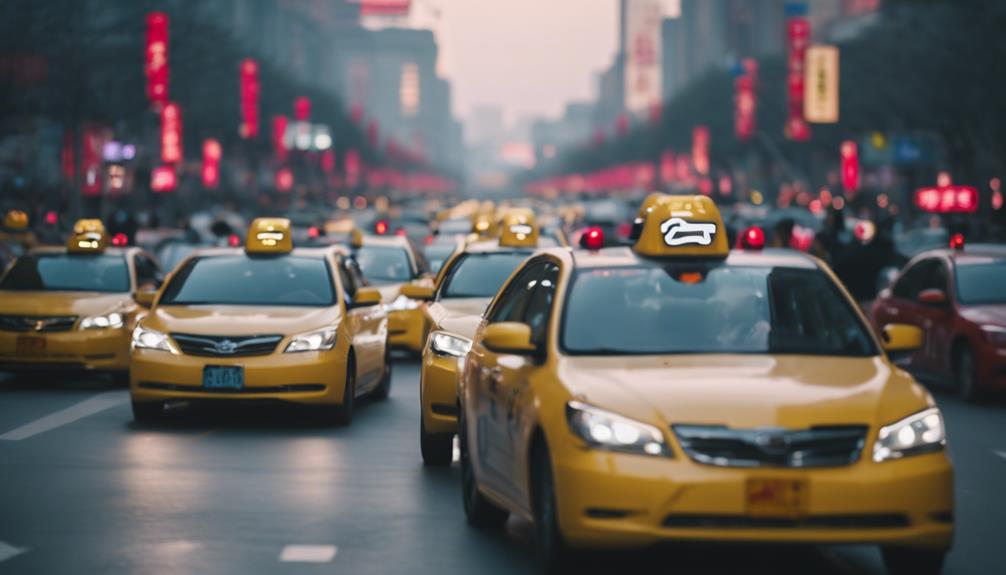
Beijing's transportation sector is undergoing significant innovation as the city grants permission for robotic taxis to operate without safety drivers. This move marks an important shift towards autonomous driving technology and has the potential to reshape urban mobility in the capital city.
- Regulatory Evolution: Beijing's decision to loosen restrictions on robotaxis reflects a progressive stance towards embracing autonomous vehicles.
- Industry Advancements: Companies like Baidu and Pony.ai are at the forefront of this transportation revolution, paving the way for a future with driverless taxis.
- Economic Implications: The introduction of robotic taxis could impact the livelihoods of traditional taxi drivers and reshape the labor market in the transportation sector.
- Technological Progress: The deployment of driverless vehicles signifies a leap forward in the development of self-driving technology.
- Global Influence: Beijing's regulatory changes could set a precedent for other cities worldwide, influencing the adoption of autonomous vehicles on a broader scale.
Future of Urban Mobility
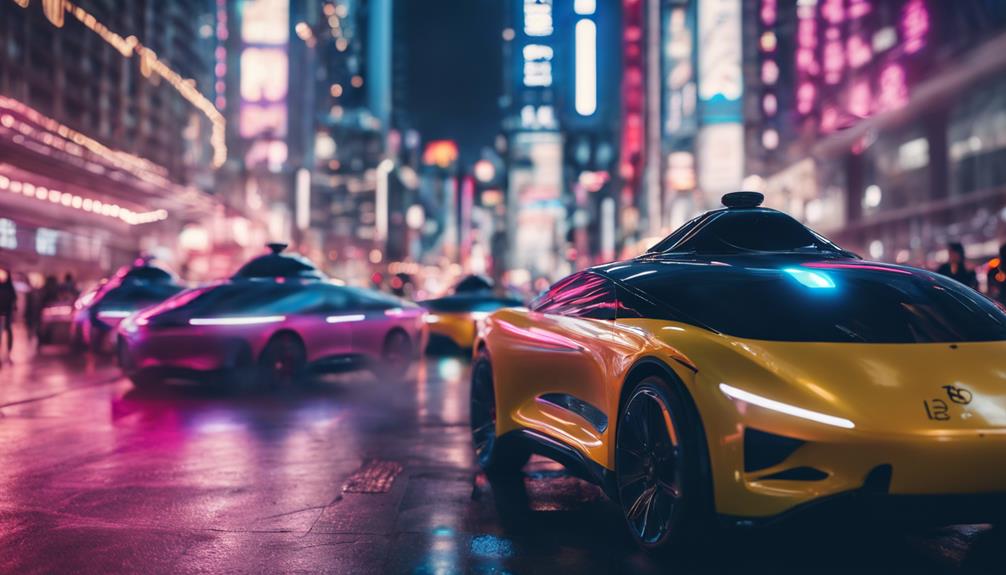
The evolution of urban mobility in Beijing is poised for a transformative change with the introduction of fully autonomous robotaxis by Baidu and Pony.ai. Beijing's decision to allow these companies to operate driverless robotaxis represents a significant milestone in the advancement of urban transportation. This move not only signals a shift towards phasing out human taxi drivers in Beijing but also underscores the city's dedication to embracing autonomous technologies for future mobility solutions.
Baidu and Pony.ai are gearing up to provide fully autonomous taxi services akin to GM's Cruise robotaxis, showcasing a notable progression in urban transportation options. The regulatory change in Beijing sets a precedent for other cities in China to potentially relax restrictions on robotaxis, paving the way for a new era of mobility in the country. However, as companies navigate this shift towards fully autonomous taxi services in Beijing, they must adhere to stricter safety and operational requirements to ensure a smooth integration of robotaxis into the urban transportation landscape.
Self-Driving Vehicles in China
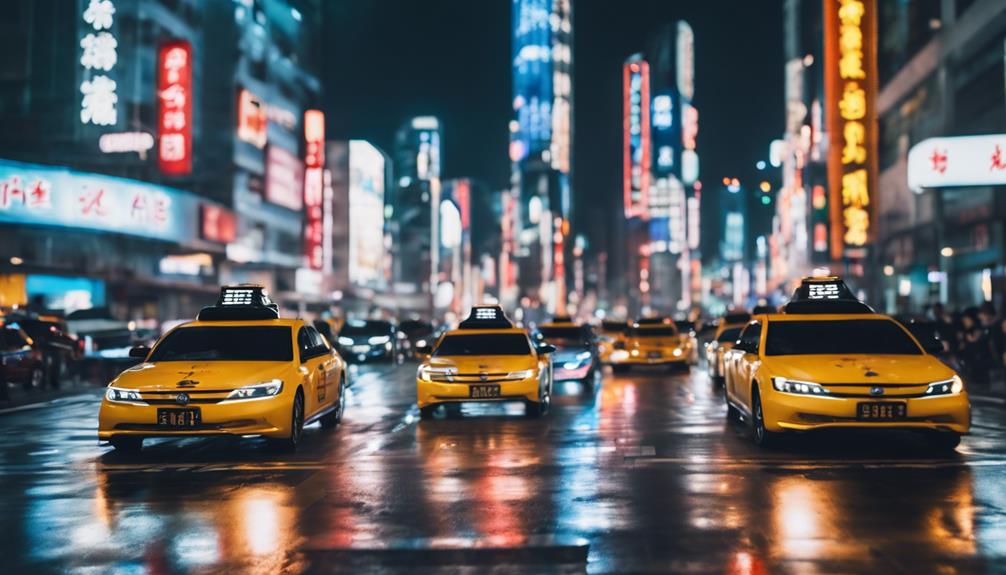
The introduction of fully autonomous robotaxis in Beijing by Baidu and Pony.ai marks a notable milestone in China's autonomous driving industry.
- Baidu and Pony.ai have obtained permits to operate driverless robotaxis in Beijing, indicating a significant advancement in autonomous vehicle technology.
- Beijing's decision to allow robotaxis without safety drivers signifies a strategic move towards reducing human involvement in taxi services.
- Both companies are required to meet stringent safety and operational standards to guarantee the smooth functioning of their driverless robotaxis.
- Beijing's regulatory shift sets a model for other Chinese cities to relax restrictions on autonomous vehicles, fostering technological progress in this sector.
- The elimination of safety drivers opens up opportunities for fully autonomous taxi services, fostering investor confidence in the viability of autonomous driving technology.
Tech Companies in Robotic Taxis
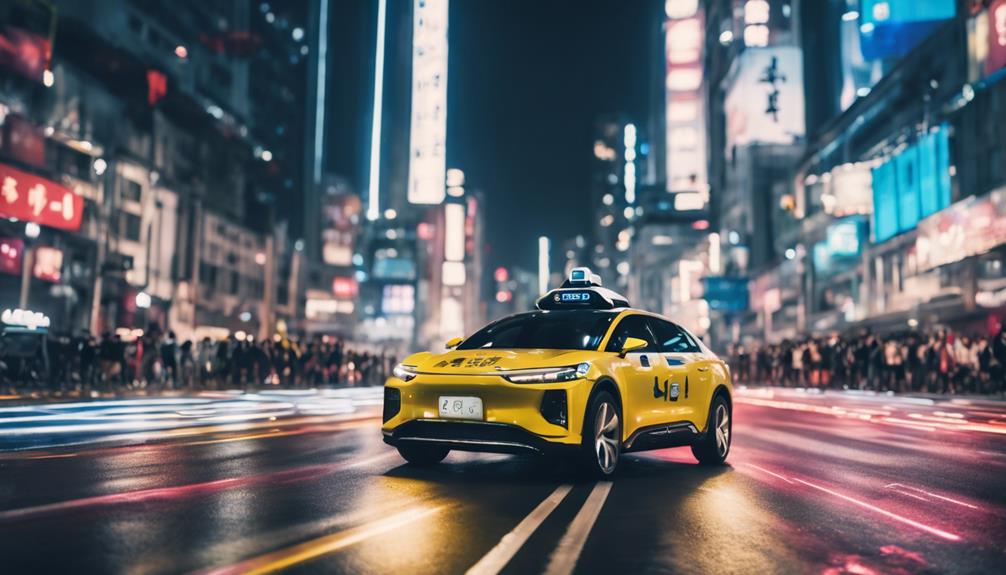
Tech companies like Baidu and Pony.ai are at the forefront of developing and implementing robotic taxi technology in China. Recently, both companies secured licenses to operate driverless robotaxis in Beijing, marking a significant advancement in the country's autonomous driving sector. Baidu and Pony.ai are working towards achieving fully autonomous taxi services akin to GM's Cruise robotaxis, aiming to eliminate the need for safety drivers entirely. This move comes as Beijing eases restrictions, signaling a shift towards reducing human taxi drivers and enforcing stringent safety and operational standards.
China's commitment to propelling autonomous technologies forward is evident through this regulatory change, which also serves to bolster investor confidence in the potential of autonomous driving. However, the shift towards robotic taxis raises concerns about the potential displacement of traditional taxi drivers and the transformation of urban transportation towards automation. As Baidu and Pony.ai lead the charge in robotic taxis, their progress highlights the evolving landscape of transportation in China.
Beijing's Autonomous Vehicle Initiatives
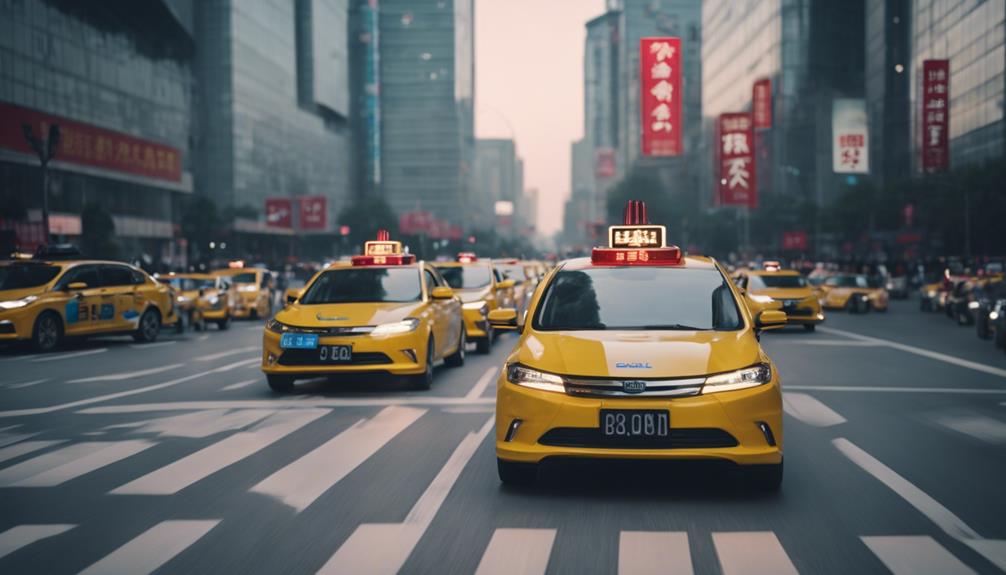
Baidu and Pony.ai's successful acquisition of permits to operate driverless robotaxis in Beijing's Yizhuang district underscores the city's progressive stance on autonomous vehicle initiatives. This move by Beijing marks a significant milestone in China's autonomous driving industry, signaling a step towards potentially phasing out human taxi drivers in the future.
The city's decision also sets a precedent for other cities in China to relax restrictions on robotaxi operations, paving the way for further advancements in autonomous transportation. Companies looking to operate driverless robotaxis in Beijing must adhere to strict safety and operational requirements, ensuring the highest standards of safety and efficiency in autonomous vehicle operations.
- Beijing's progressive stance on autonomous vehicle initiatives
- Potential implications for the future of transportation in China
- Influence on other cities in China to relax restrictions on robotaxi operations
- Stringent safety and operational requirements for companies operating driverless robotaxis in Beijing
- Advancements in autonomous transportation facilitated by Beijing's decision
Humanless Taxi Operations in China
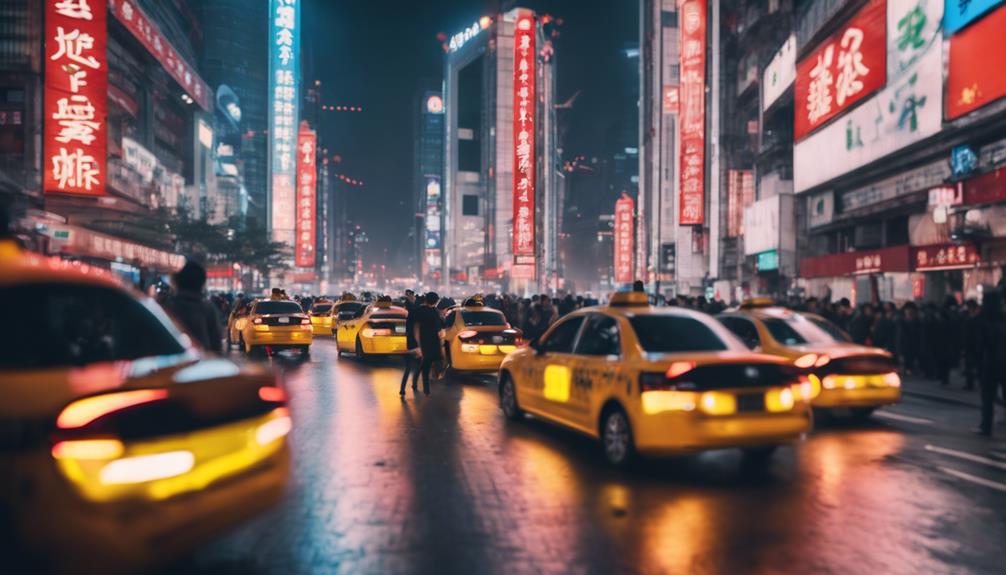
In a groundbreaking development for autonomous transportation in China, permission has been granted for driverless robotaxis to operate in Beijing's Yizhuang district. Baidu and Pony.ai, two prominent players in the autonomous driving industry, have received approval to run their driverless robotaxis without the need for safety drivers inside the vehicles.
This significant milestone signifies a major step forward in China's efforts towards humanless taxi operations. Baidu is set to commence operations with 10 driverless robotaxis initially, with plans to expand the fleet by adding 30 more vehicles in the near future. Similarly, Pony.ai, with an initial allowance to operate four robotaxis without safety drivers, aims to increase the number of autonomous vehicles in its fleet over time.
These regulatory changes in Beijing not only pave the way for increased efficiency in transportation but also enable the collection of valuable data during peak traffic hours through the operation of nearly driverless robotaxis.
Autonomous Transport Regulations
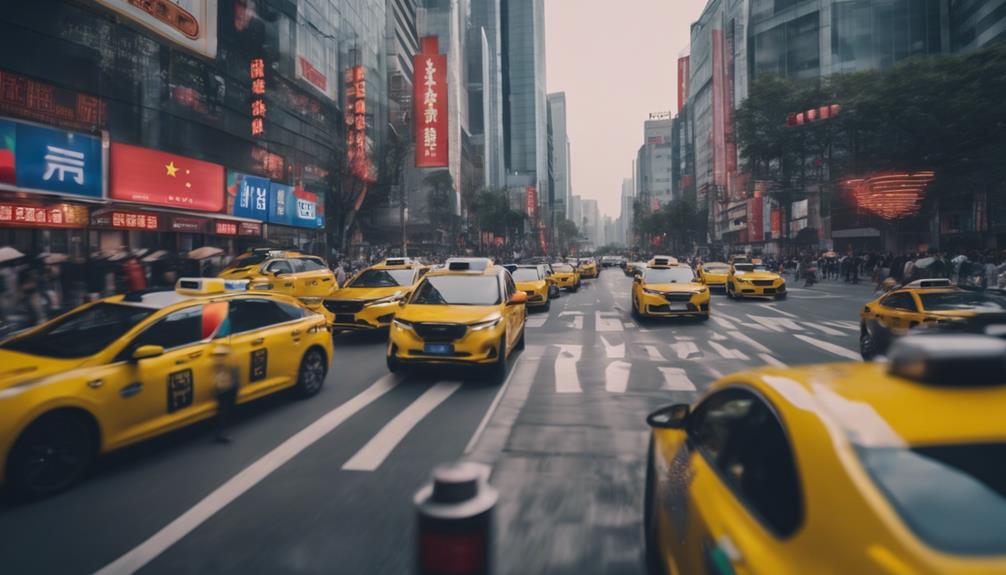
Autonomous transport regulations in Beijing's Yizhuang district now permit driverless robotaxis to operate with a staff member present but not in the driver's seat. This change signifies a significant step towards autonomous driving in China and showcases the city's willingness to embrace innovative technologies.
- Beijing city loosens restrictions specifically for Baidu and Pony.ai, allowing them to operate driverless robotaxis.
- Regulations mandate the presence of a staff member inside the autonomous vehicles, ensuring passenger safety and oversight.
- The Chinese government still requires human staff in the vehicles, preventing fully autonomous operations without supervision.
- Beijing's unique rules for testing and running robotaxis set it apart from other regions in China, emphasizing the city's proactive approach to technological advancements.
- This regulatory shift not only benefits Baidu and Pony.ai but also marks a critical milestone in the advancement of autonomous transport within China.
Robotic Taxis Transforming Commuting
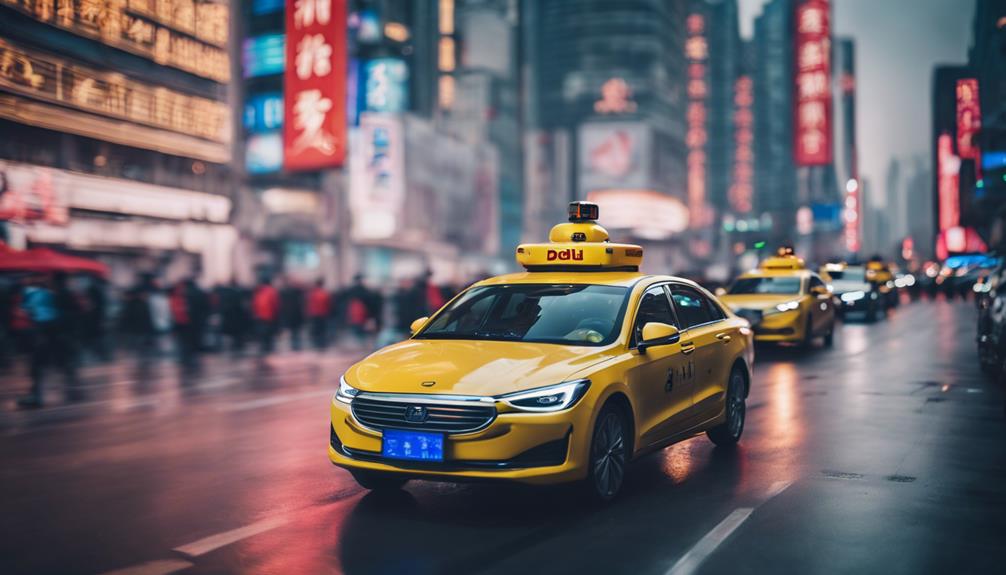
The future of commuting is undergoing a transformation with the introduction of driverless robotaxis, such as those operated by Baidu and Pony.ai in Beijing. These autonomous taxis offer numerous benefits, including increased efficiency, reduced traffic congestion, and potentially lower costs for users.
Safety remains a critical focus in the development of robotic taxis, with companies like Baidu and Pony.ai adhering to stringent safety and operational requirements to guarantee secure transportation services for passengers.
Future of Commuting
Embracing futuristic technology, Beijing's decision to allow Baidu and Pony.ai to operate driverless robotaxis signifies a significant shift in the world of commuting. This move towards autonomous commuting is set to revolutionize urban transportation in several ways:
- Enhanced Safety: Autonomous taxis are equipped with advanced sensors and algorithms, potentially reducing the risk of accidents caused by human error.
- Increased Efficiency: Driverless robotaxis can optimize routes and traffic flow, leading to smoother and more efficient commuting experiences.
- 24/7 Availability: With autonomous taxis, commuters may have access to transportation services round the clock, catering to varying schedules and needs.
- Environmental Impact: The shift towards driverless technology could contribute to a decrease in carbon emissions, promoting a more sustainable mode of transportation.
- Technological Advancements: The adoption of autonomous taxis reflects China's commitment to innovation and technological progress, paving the way for future advancements in commuting.
These developments highlight the transformative potential of driverless robotaxis in shaping the future of commuting experiences.
Autonomous Taxi Benefits
Robotic taxis are revolutionizing urban commuting with their convenient and efficient transportation solutions. Autonomous taxis, such as those provided by Baidu and Pony.ai, are at the forefront of this transformation, offering passengers a seamless way to navigate city streets.
By eliminating the need for human drivers, these robotic taxis can operate 24/7, ensuring round-the-clock service availability for commuters. The increased safety features and advanced technology embedded in autonomous taxis enhance the overall security of the commuting experience, providing passengers with peace of mind during their travels.
Moreover, the use of robotic taxis not only improves individual commuting experiences but also contributes to reducing traffic congestion and emissions, thereby promoting a greener and more sustainable transportation system. As autonomous taxi services continue to evolve, they're paving the way for a future where fully autonomous vehicles will revolutionize the way people commute, marking a significant step towards eliminating human drivers from the transportation equation.
Safety in Robotic Taxis
Safety concerns in autonomous taxis have prompted rigorous testing and validation to guarantee passenger safety as Beijing allows robotic taxis to operate without safety drivers.
The following points highlight the importance of safety in driverless vehicles:
- Continuous monitoring and real-time data analysis are essential to safeguard safe operations.
- Advanced sensors and AI technology play a critical role in detecting and avoiding potential hazards.
- Regular software updates and maintenance are necessary to address any security vulnerabilities promptly.
- Emergency protocols and fail-safe mechanisms must be in place to handle unexpected situations effectively.
- Collaboration with regulatory bodies and stakeholders is important to establish industry standards and best practices for driverless vehicle safety.
China's Driverless Taxi Milestone
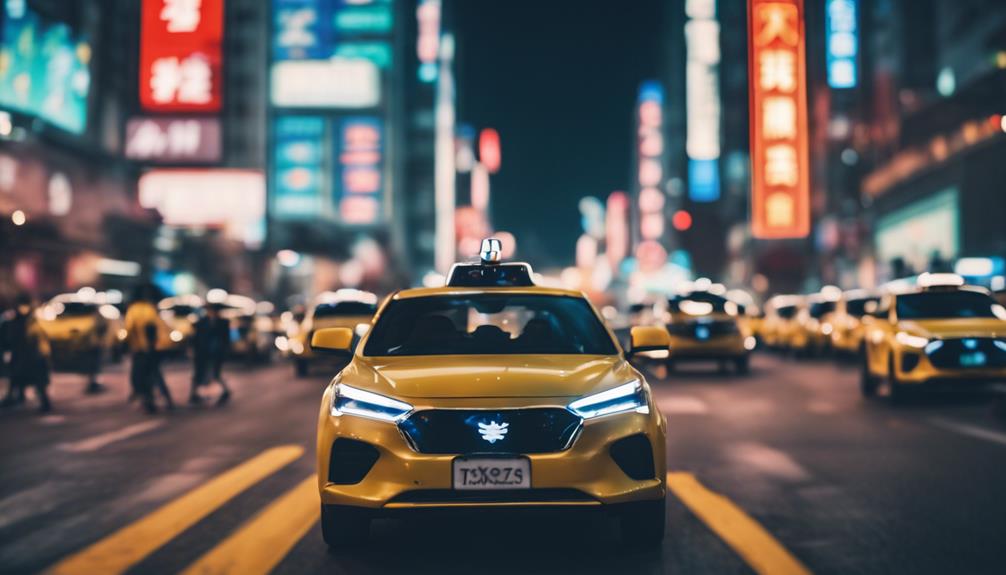
This milestone achievement in China's autonomous driving industry signifies a significant advancement as Baidu and Pony.ai secure permits to operate driverless robotaxis in Beijing. By obtaining these permits, both companies are paving the way for the capital city to potentially remove human taxi drivers from its streets. Beijing's decision to allow driverless robotaxis demonstrates a progressive approach towards embracing autonomous technology and aligns with the global trend of integrating self-driving vehicles into urban transportation systems.
The move to grant permits to Baidu and Pony.ai comes with stringent safety and operational requirements that must be fulfilled. This guarantees that the autonomous vehicles operate efficiently and securely on the roads, prioritizing the safety of passengers and other road users. As Beijing sets this precedent, it's anticipated that other cities in China may follow suit in relaxing regulations for robotaxis, further propelling the development and adoption of autonomous driving technology across the country.
Implications for Transportation Industry
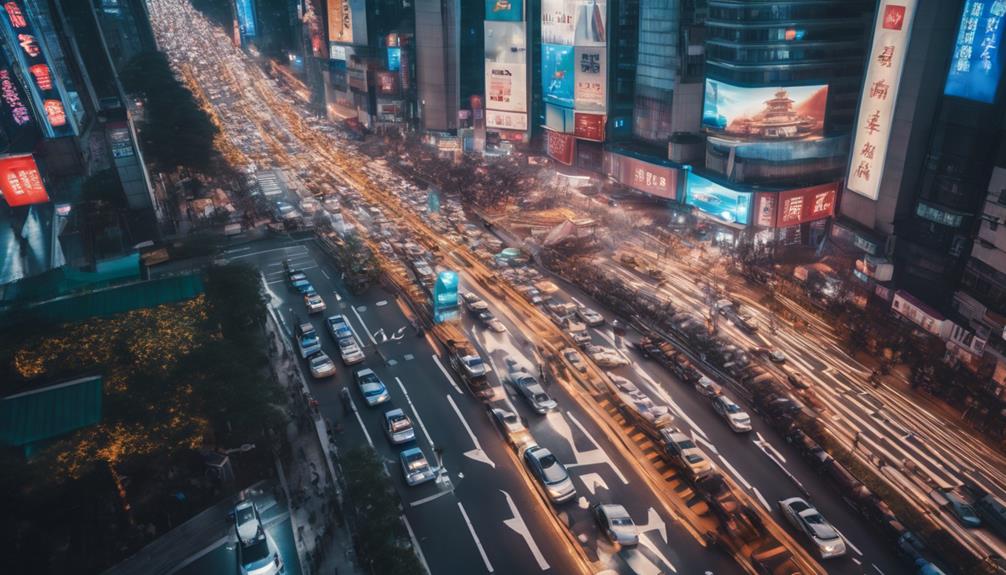
With Beijing's decision to permit Baidu and Pony.ai to operate driverless robotaxis, the transportation industry faces a transformative shift towards fully autonomous services. This move in the capital city signifies a significant milestone in the evolution of transportation systems.
Some implications for the transportation industry include:
- Increased efficiency: Autonomous vehicles can optimize routes and reduce idle times, leading to more efficient transportation services.
- Safety enhancements: With rigorous safety requirements in place, the implementation of driverless robotaxis could potentially reduce accidents caused by human error.
- Environmental impact: Autonomous vehicles have the potential to lower carbon emissions and contribute to a greener transport sector.
- Job displacement concerns: The shift towards fully autonomous services raises questions about the future of employment for human taxi drivers.
- Technological advancements: The adoption of autonomous technologies in the transportation sector reflects ongoing innovations that could reshape urban mobility.
Frequently Asked Questions
Which China Capital City Is Letting the Public Take Fully Driverless Robotaxis?
Beijing, the capital city of China, is allowing the public to take fully driverless robotaxis. This move is a significant milestone in China's autonomous driving industry.
Companies like Baidu and Pony.ai have obtained permits to operate driverless robotaxis in Beijing. These permits are seen as a step towards phasing out human taxi drivers in the future.
Strict safety and operational requirements must be met by companies to operate driverless robotaxis in Beijing.
Did Baidu Pony.Ai Win Permits to Offer Driverless Robotaxi Services in Beijing?
Baidu and Pony.ai secured permits to operate driverless robotaxi services in Beijing. This move, reported by Reuters last week, signifies a significant step towards autonomous transportation.
Baidu plans to introduce ten self-driving vehicles in Beijing for their robotaxi service, while Pony.ai currently operates in Guangzhou utilizing various non-electric vehicles.
Both companies aspire to achieve fully driverless operations akin to GM's Cruise robotaxis, contributing to the evolution of transport technology.
Does China Have Robotaxis?
China does have robotaxis, with companies like Baidu and Pony.ai having obtained licenses for driverless operations in Beijing and Guangzhou. These permits mark a significant milestone in China's autonomous driving industry. Beijing's regulatory change allows Baidu to launch 10 autonomous vehicles, while Pony.ai aims for driverless operations similar to GM's Cruise robotaxis.
The move towards eliminating human taxi drivers signals a step towards fully autonomous taxi services in China.
Conclusion
To sum up, the recent loosening of restrictions on robotic taxis in China's capital marks a significant milestone in the transportation industry. Like a well-oiled machine, these driverless vehicles are poised to revolutionize commuting by eliminating the need for human taxi drivers.
As autonomous technology continues to advance, we can expect to see more cities embracing this efficient and innovative mode of transportation.
The future of driverless taxis is here, and it's changing the way we move from point A to point B.
